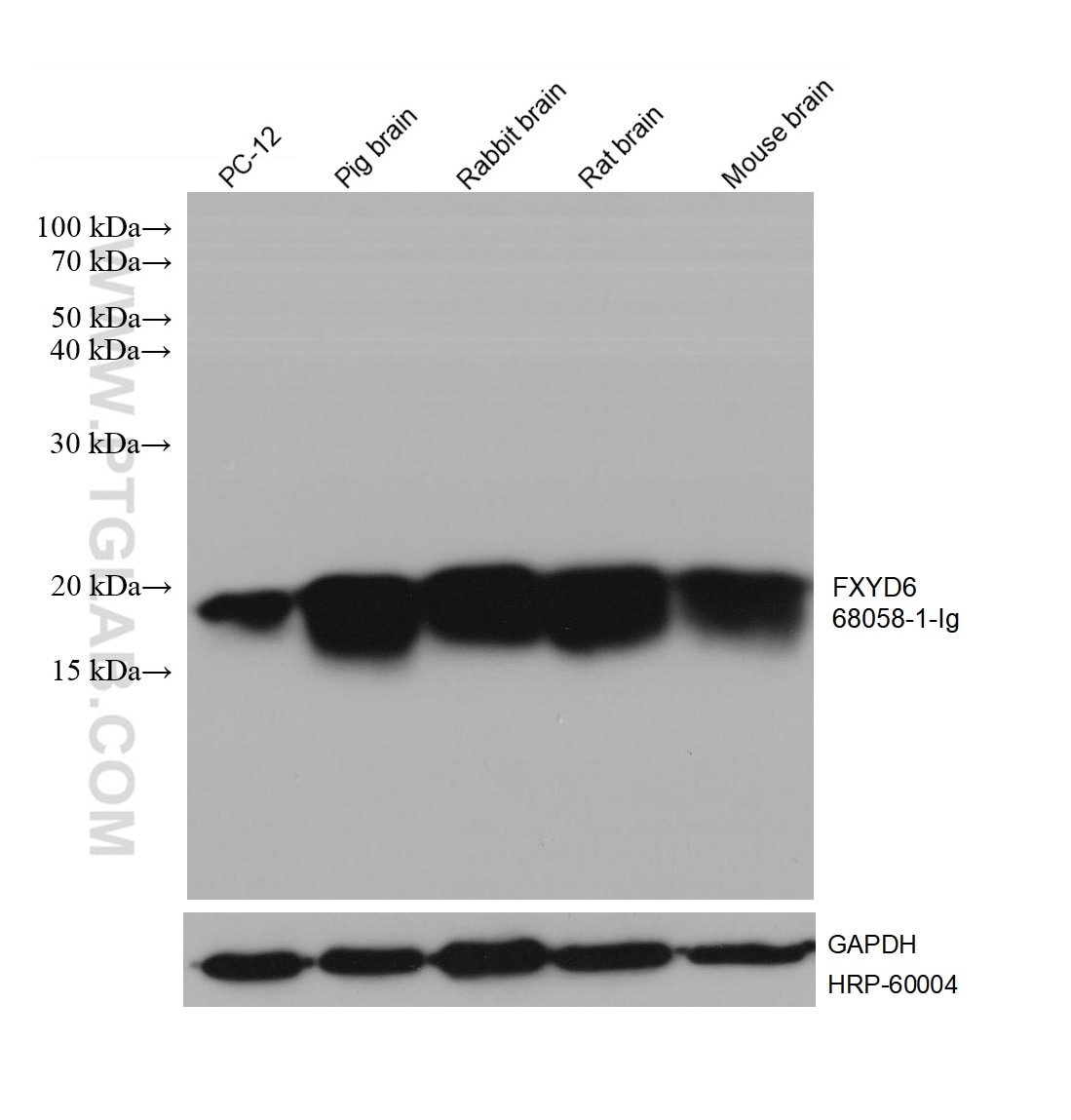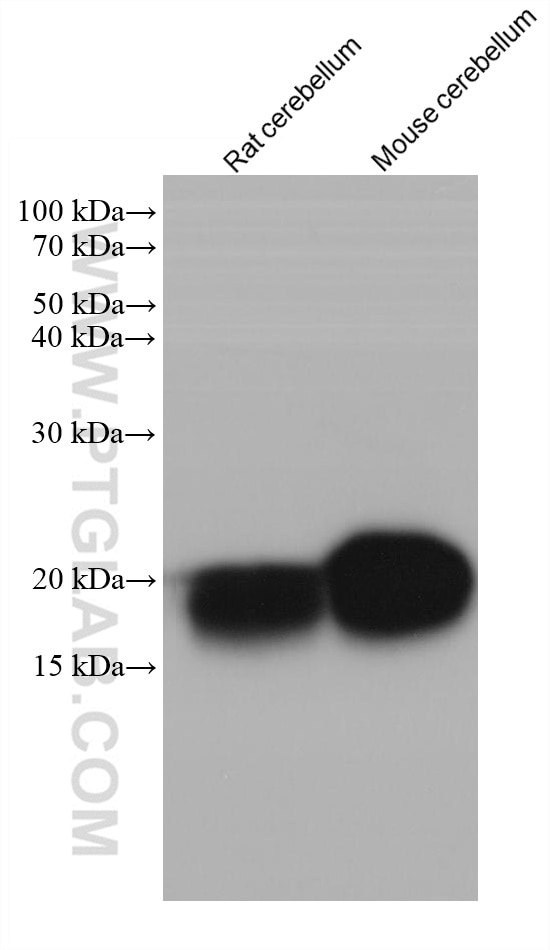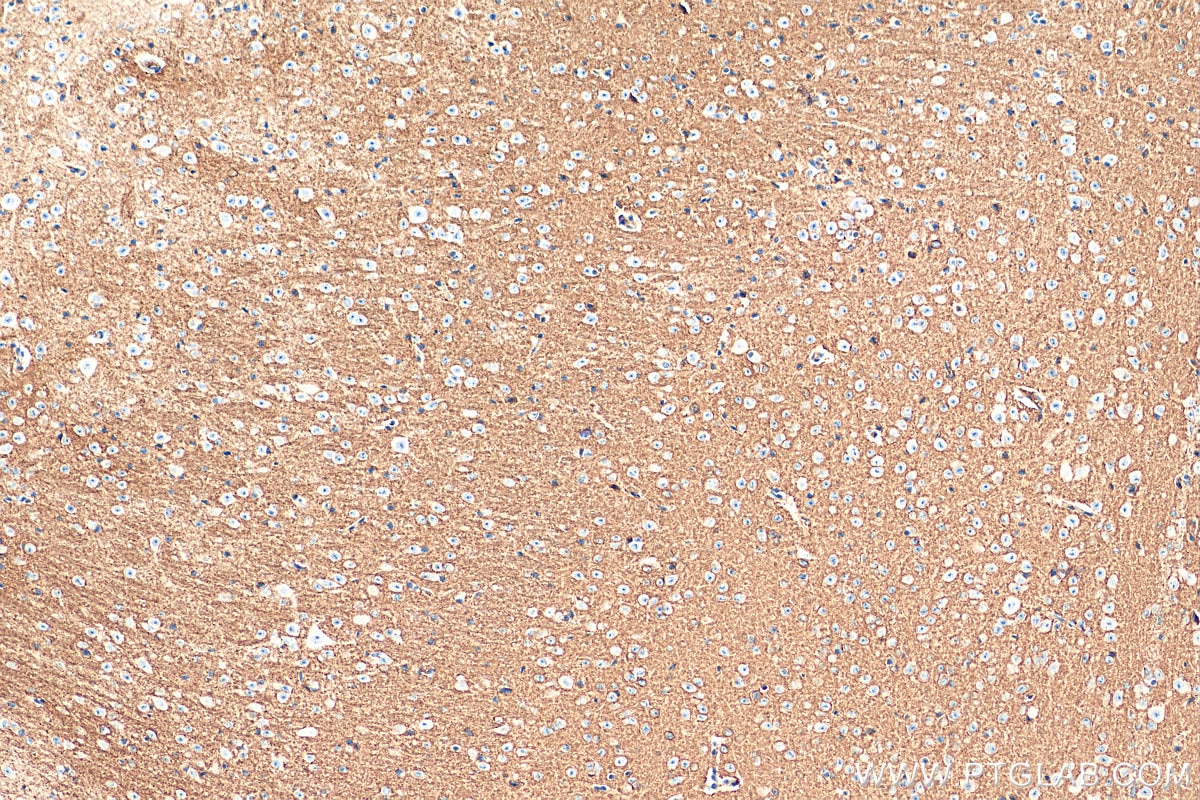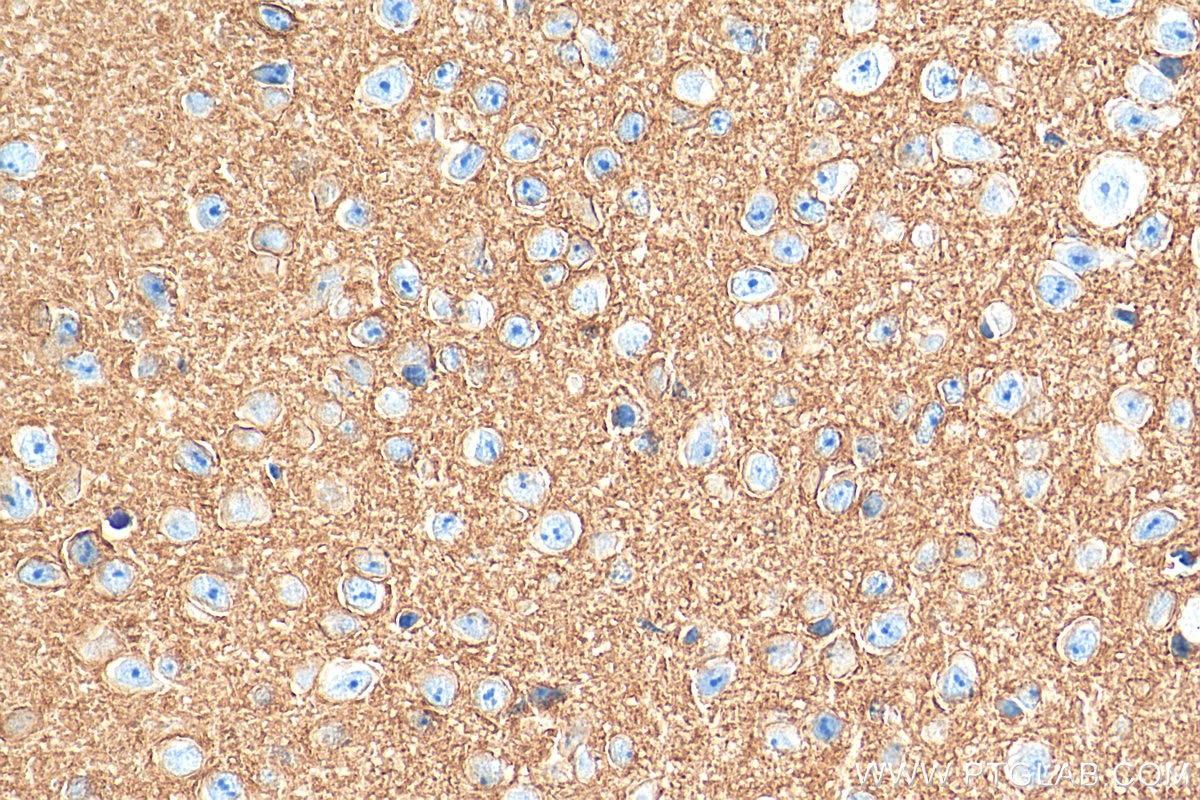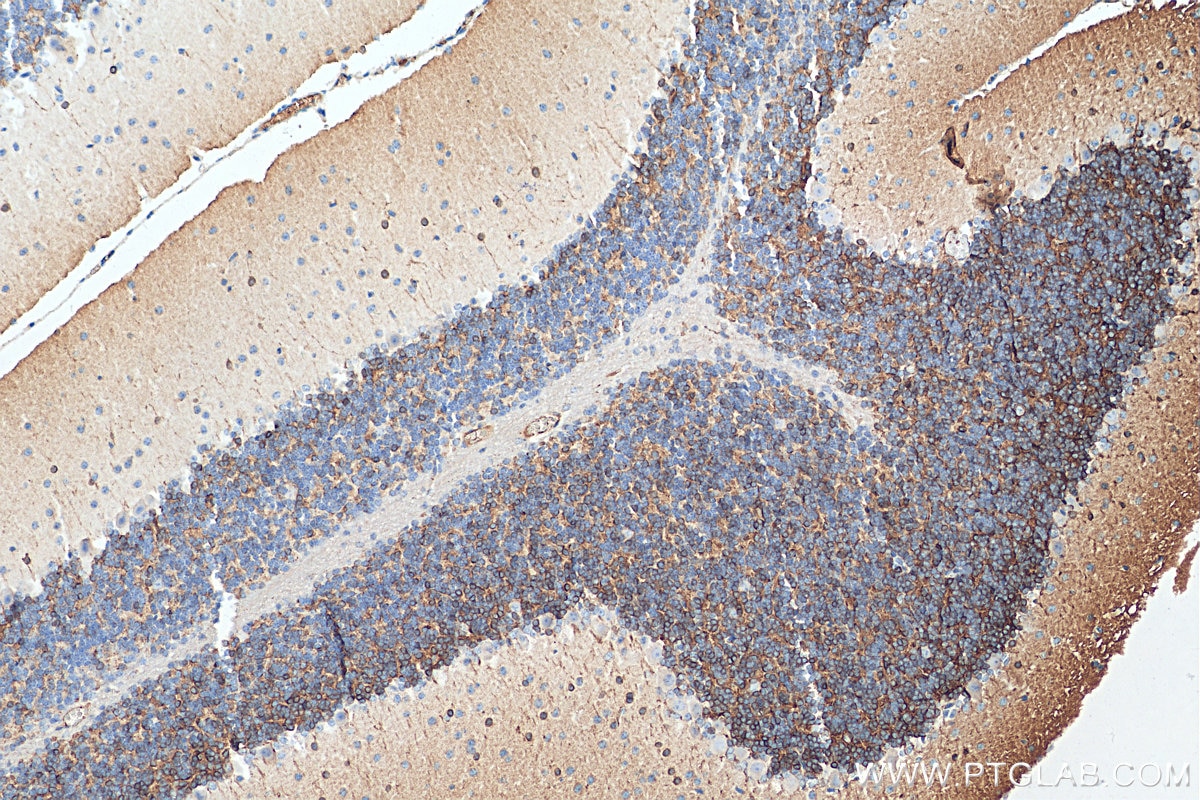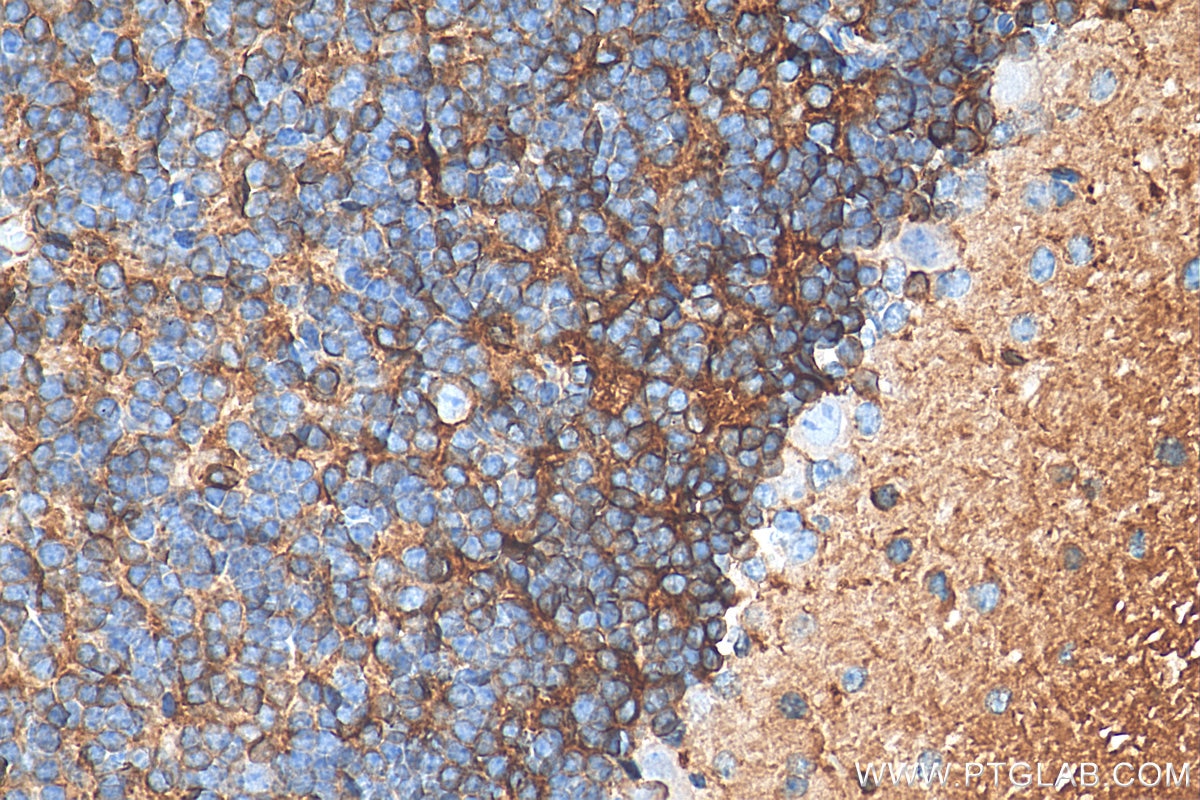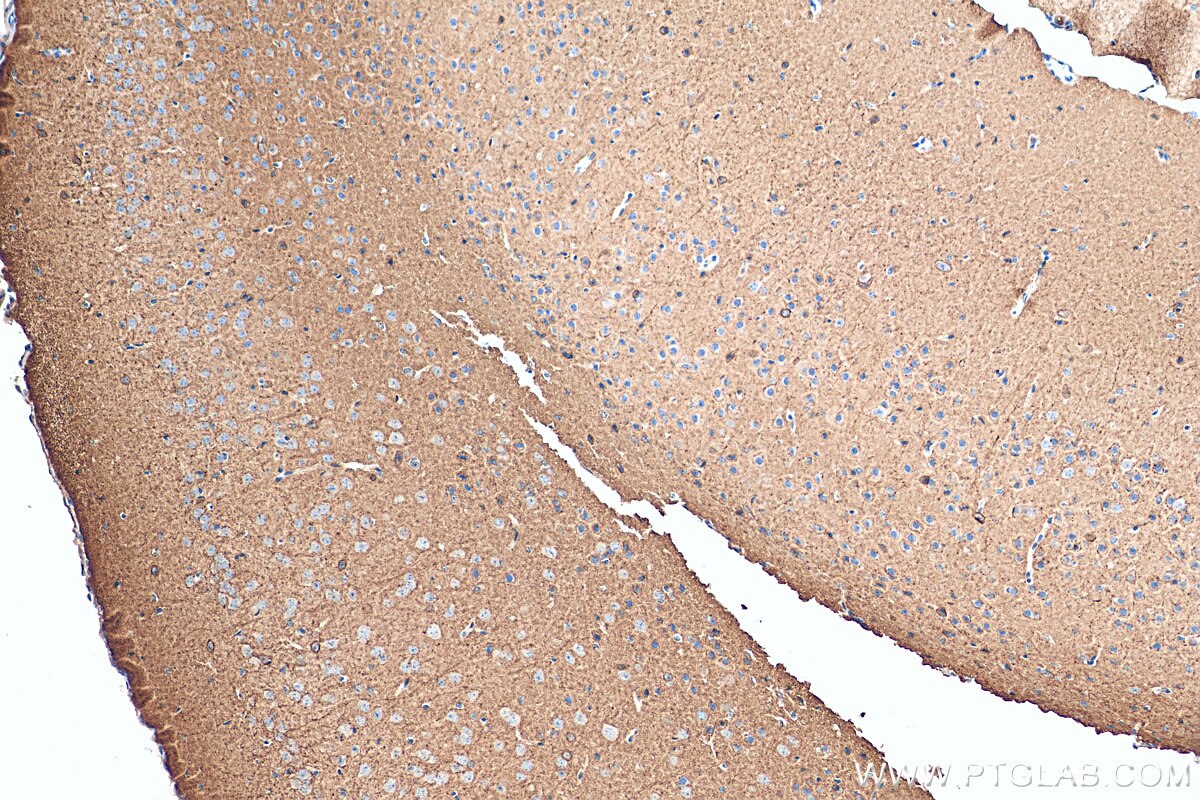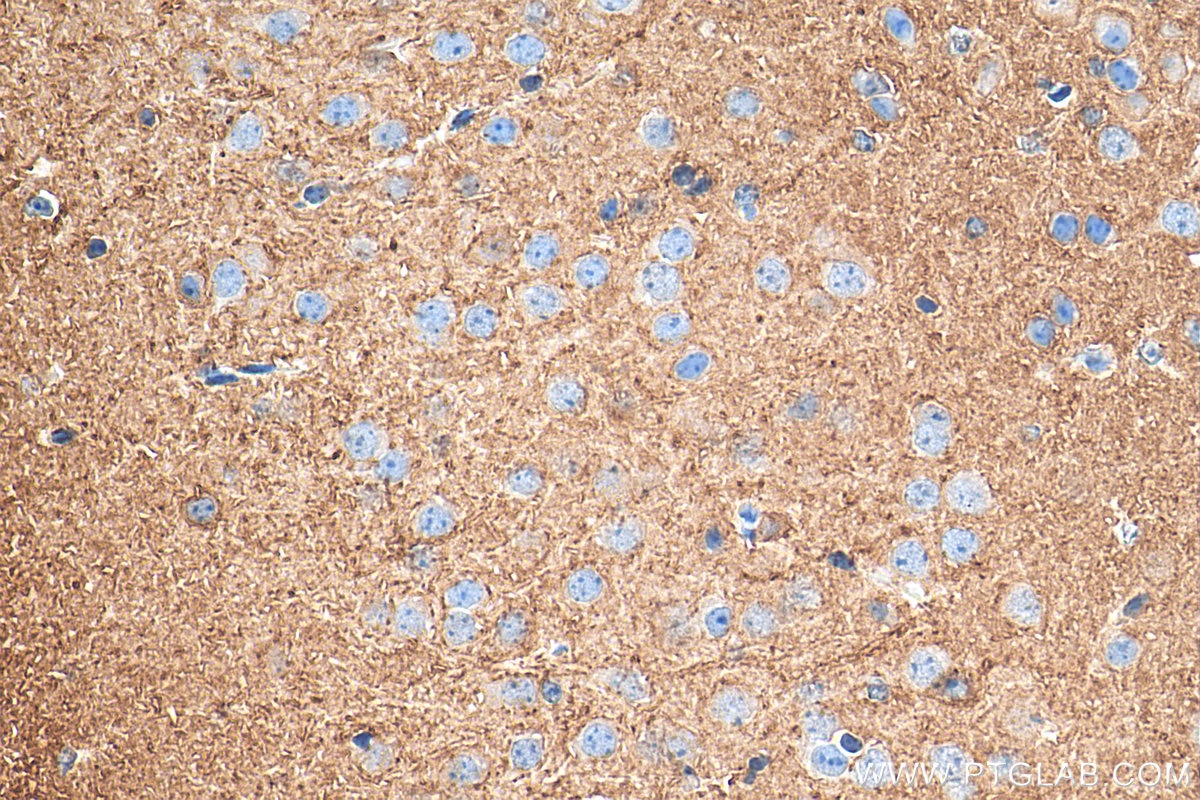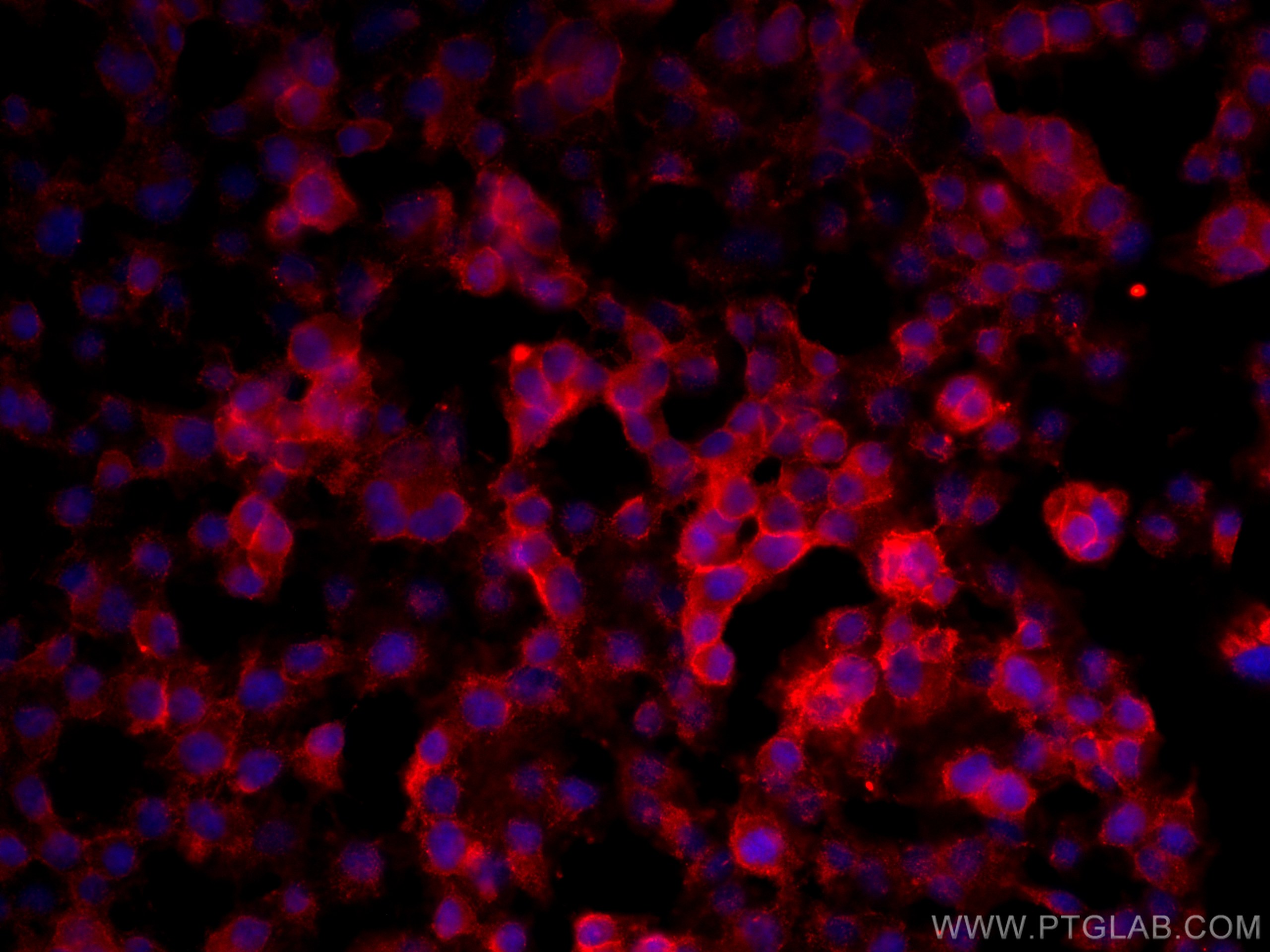Product Information
68058-1-PBS targets FXYD6 in WB, IHC, IF/ICC, Indirect ELISA applications and shows reactivity with human, mouse, rat, pig, rabbit, chicken samples.
| Tested Reactivity | human, mouse, rat, pig, rabbit, chicken |
| Host / Isotype | Mouse / IgG1 |
| Class | Monoclonal |
| Type | Antibody |
| Immunogen | FXYD6 fusion protein Ag8538 Predict reactive species |
| Full Name | FXYD domain containing ion transport regulator 6 |
| Calculated Molecular Weight | 95 aa, 11 kDa |
| Observed Molecular Weight | 20 kDa |
| GenBank Accession Number | BC018652 |
| Gene Symbol | FXYD6 |
| Gene ID (NCBI) | 53826 |
| RRID | AB_2918799 |
| Conjugate | Unconjugated |
| Form | Liquid |
| Purification Method | Protein G purification |
| UNIPROT ID | Q9H0Q3 |
| Storage Buffer | PBS only, pH 7.3. |
| Storage Conditions | Store at -80°C. |
Background Information
The FXYD family is a group of small single-span transmembrane proteins characterized by a signature sequence containing an FXYD motif, two conserved glycines and a serine residue. Members of the FXYD family, including FXYD1 (phospholemman), FXYD2 (gamma subunit of Na,K-ATPase), FXYD3 (Mat8), FXYD4 (CHIF), FXYD5 (RIC), FXYD6 (phosphohippolin) and FXYD7, are tissue specific regulators of the Na,K-ATPase. FXYD6 is primarily expressed in the brain. It modulates the kinetic activity of Na,K-ATPase and has long-term physiological importance in maintaining cation homeostasis. It may play a role in endolymph composition and has a potential important role in neuronal excitability of the CNS during postnatal development and in the adult brain. On the SDS-PAGE FXYD6 migrates with an apparent molecular weight of approximately 20 kDa, which is larger than the calculated molecular weight of 10.5 kDa (PMID: 15193427; 17209044). The gene encodes FXYD6 is located on chromosome 11q23.3, and it might be a susceptibility gene of schizophrenia.
